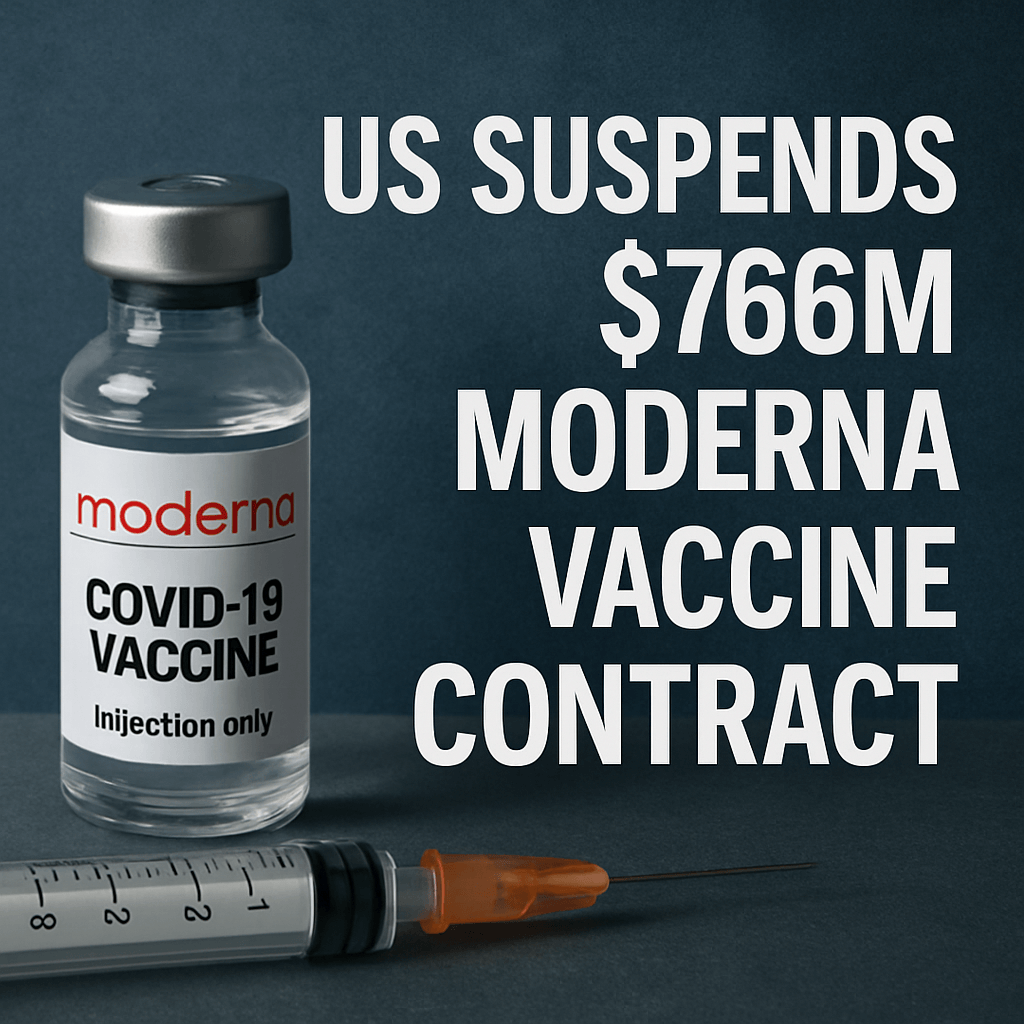US Suspends $766M Moderna Vaccine Contract

The US Department of Health and Human Services (HHS) has withdrawn a combined 766 million dollar award to Moderna Inc. for the development and potential purchase of an investigational mRNA vaccine targeting pandemic influenza strains, including H5N1 bird flu.
Background of the BARDA Agreement
Modernas vaccine candidate, designated mRNA-1018, leveraged the same lipid nanoparticle-encapsulated mRNA platform successfully used for SARS-CoV-2 vaccines. In July 2024, the Biomedical Advanced Research and Development Authority (BARDA) awarded 176 million to support preclinical and early-phase clinical work. A follow-on award of 590 million in January 2025 was intended to underwrite a Phase 3 study and procurement of doses for strategic stockpiling.
Key Features of mRNA-1018
- Antigen design: Encodes for the hemagglutinin protein of H5N1, tailored for high immunogenicity.
- Delivery system: Utilizes lipid nanoparticles optimized for stability at 2-8°C refrigeration.
- Dosing regimen: Single-dose primary series with a booster interval of six months under study.
Interim Trial Results and Regulatory Considerations
Moderna reported interim data from a randomized, placebo-controlled Phase 1/2 trial involving 300 healthy adults. The primary endpoints were neutralizing antibody titers and safety profile at Day 28 post-vaccination.
- Immunogenicity: Geometric mean titers (GMT) against H5N1 reached 1:512, exceeding the pre-specified threshold of 1:250 for potential efficacy.
- Reactogenicity: Solicited adverse events were mostly mild to moderate injection-site pain, fatigue, and headache, with less than 5 percent experiencing grade 3 events.
Despite these positive signals, HHS cited shifting budget priorities and a reassessment of pandemic risk when deciding to cancel the awards.
While the termination of funding from HHS adds uncertainty, we are pleased by the robust immune response and safety profile observed in this interim analysis, said a Moderna spokesperson.
Recent Developments in H5N1 Surveillance
Over the past year, H5N1 avian influenza has spilled over into US cattle herds, prompting enhanced veterinary surveillance. At least 70 human cases have been documented, mostly presenting with mild upper respiratory symptoms. One fatality was reported in late 2024. Public health authorities emphasize that viral evolution could heighten transmissibility or virulence, reinforcing the need for countermeasure development.
Technical Analysis of mRNA Vaccine Platform
The mRNA approach offers rapid antigen design cycles and scalable manufacturing. Key technical specifications include:
- Sequence optimization via codon usage to maximize protein expression in host cells.
- Lipid formulation using ionizable lipids that enhance endosomal escape.
- Process yield of up to 5 grams per bioreactor batch, enabling potential million-dose output.
Regulatory and Funding Landscape
The cancellation highlights broader shifts in US biodefense strategy. BARDA has recently reallocated funds toward emerging pathogen platforms and multiplatform vaccines. Industry experts note that private investors remain interested in mRNA technology, with several biotech firms pivoting to multispecific or self-amplifying RNA constructs.
Implications for Pandemic Preparedness
Experts warn that removing a major funding pillar could slow late-stage trials and delay stockpiling of platform vaccines. However, alternative mechanisms exist:
- Advanced Purchase Agreements with coalition governments
- Public-private consortium grants under the Pandemic Preparedness Partnership
- International financing through organizations such as CEPI
Expert Commentary
Dr. Lisa Chen, a virologist at the Global Vaccine Institute, commented that “the mRNA-1018 data are encouraging, but without Phase 3 funding, full licensure and emergency use authorization timelines will be extended.”
Meanwhile, financial analysts estimate that Modernas Q1 R&D expense reduction could free up to 200 million dollars for pipeline diversification, including oncology and rare disease projects.
Outlook and Next Steps
Moderna has indicated plans to seek alternative funding sources and may reapply for BARDA support in Q3 2025. The company is also exploring partnerships with the Coalition for Epidemic Preparedness Innovations (CEPI) and the World Health Organizations mRNA Technology Transfer Hub.
Watch for updates on regulatory filings with the FDA and any renewed government grants as the H5N1 situation evolves domestically and abroad.
Read on YieldRadar.info